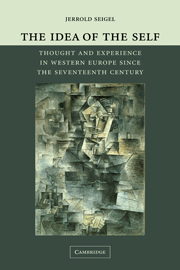Book contents
6 - Sensationalism, reflection, and inner freedom: Condillac and Diderot
Published online by Cambridge University Press: 05 June 2012
Summary
Ideas travel easily from place to place, leaving behind the forms of social and political life that help give birth to them. This was conspicuously true in the eighteenth century, as the writings of Enlightenment philosophers and literary figures circulated between countries whose economies, governments, and public and private mores retained notable and often-remarked differences. But when ideas move about in this way they often undergo changes, some obvious, some more subtle. The English thinker who attracted most interest elsewhere (apart from Newton) was Locke, whose empiricism and critical spirit, combined with moderation and tolerance, became fundamental elements of Enlightened thinking everywhere. But Locke's ideas took on new features in the hands of his continental followers. Given the important place we have attributed to him in the history of selfhood, looking into the ways his ideas were received and reworked seems a good entry-point into the way the self was understood and experienced in other places.
In France the principal interpreter of the Essay Concerning Human Understanding was the Abbé Etienne Bonnot de Condillac, an influential philosophe and the proponent of sensationalism, the doctrine that all of mental life derived from sense-impressions. He took up the problems Locke discussed in his Essay, notably perception, thinking, and the self, principally in two works, the Essai sur l'origine des connaissances humaines (Essay on the Origin of Human Knowledge) of 1746, and the Traité des sensations (Treatise on Sensations) of 1754.
- Type
- Chapter
- Information
- The Idea of the SelfThought and Experience in Western Europe since the Seventeenth Century, pp. 171 - 209Publisher: Cambridge University PressPrint publication year: 2005

